
UDAYSHANTH FERNANDO FOUNDATION AND SASKIA FERNANDO GALLERY PRESENT
19.01.23 – 11.02.23



19.01.23 – 11.02.23

The Artists for Artists Production Fund (A4A) was an initiative launched by Udayshanth Fernando Foundation (UFF) in collaboration with Saskia Fernando Gallery (SFG) in October 2021. As Sri Lanka’s first publicly funded arts grant, aimed at fostering emerging artists in the region, A4A marked a milestone in Sri Lankan contemporary art.
The inaugural A4A was primarily generated from the sale of limited-edition poster prints donated by artists working with SFG and Paradise Road Galleries, and the grantees were selected from submissions received through an open call and judging process. The 2021 judging panel included Ms. Sonal Singh, Managing Director of Christie’s India, Dr. Sanjana Hattotuwa, Founder of Groundviews, and Prof. Jagath Weerasinghe, Artist and Archaeologist.
The funds collected through the initiative were used to cover production costs for materials, workspaces, and transportation for each artist selected for the grant. In addition to the financial support, the selected artists received continuous mentorship and access to the patronage and curatorial networks of the Saskia Fernando Gallery.
The A4A arrives at a critical time as Sri Lanka faces one of the worst economic crises in decades. By enabling young artists to continue researching and developing new bodies of work, this initiative addresses a long overdue gap in arts funding which has limited the scope for creative experiments in the region. It aims to support and launch the career of emerging artists and create a cycle of reinvestment in the Sri Lankan art community.
The Udayshanth Fernando Foundation was established in 2020 with the objective of elevating the local arts industry. People turn to the arts for enrichment during adversities, yet the artistic community is always the first to suffer from neglect. It recognizes that the emphasis on solely buying art to support art actually has an adverse effect on the artist’s career. There is a pressing need to focus on patronage that goes beyond simply collecting that is essential to the industry’s survival.
The Udayshanth Fernando Foundation was established in response to the debilitating impact of the Covid-19 pandemic on the Sri Lankan art industry to support emerging and established contemporary Sri Lankan artists. The foundation believes that introducing the richness of Sri Lankan art to a global audience will ensure its preservation and future growth.
The Udayshanth Fernando Foundation was conceptualized by Annika and Saskia Fernando, daughters of Paradise Road Group of Companies Founder, Udayshanth Fernando. A collection of works by pioneering contemporary Sri Lankan artists, Jagath Weerasinghe and Chandraguptha Thenuwara were donated to the Los Angeles County Museum of Art (LACMA) in 2020 as a part of its inaugural initiatives.
The Udayshanth Fernando Foundation is currently working on a publication revolving around the private collection and design of Udayshanth Fernando to further greater understanding and broader access to modern and contemporary Sri Lankan art and heritage.
The A4A was born out of the generosity of artists who encouraged us to launch an initiative that could assist others from their community during the Covid-19 pandemic. The decision to create a limited edition of prints was specific in its intention to shift the local trend of selling original art for fundraising, and additionally, enabled a wider community to purchase and thereby contribute. With this initiative, we successfully raised funds to begin our first project in 2021.
The Udayshanth Fernando Foundation was established with the intention to facilitate projects such as these—to further support young artists and craftspeople in the island. The structure of the A4A provides us with a sustainable method of supporting the arts. Looking ahead, we aim to grow as a platform through which we hope to diversify and develop similar efforts for the industry.
The crisis continually faced by Sri Lanka over the last four years created a challenging environment for young artists to work in. Art industry development projects often fall into Corporate Social Responsibility and charitable programs belonging to the corporate sector, eventually creating challenges for growth for the next generation of artists. This system perpetuates an environment wherein the ‘artist struggle’ alone seems a luxury.
Alongside the misplaced support of corporations, art collecting in recent years has pushed artists towards freelance practices—an approach that can be restrictive as it stifles the development of artist portfolios and provides them with only short-term financial gain. Alternatively, this has also made it increasingly challenging for galleries and representatives to function. The A4A was born out of this insufficiency. It allows us to offer a means to formalize and sustain the efforts that our family and galleries wish to provide to young artists in Sri Lanka.
The timeline for the production fund was intended to be 6 months. The challenges we faced throughout this period have become the learning blocks on which we hope to develop the framework for our second project. During the course of this project, we faced massive crises in the world, in Sri Lanka and personally. We are grateful to the team for ploughing ahead and this exhibition is proof that we have succeeded in our aim to mentor and strengthen new forms of contemporary art in young Sri Lankan artists.
The combination of practices and medium belonging to these artists show strength in their individuality. Eager to connect with leading established artists, they also connected with one another during the course of the project. In an effort to break out of trends in traditional art practices locally, we are excited to see entirely new narratives and materiality within these bodies of work.
Firstly, we would like to thank Abdul Halik Aziz, Chandraguptha Thenuwara, Charith Wijesundara, Chudamani Clowes, Fabienne Francotte, Firi Rahman, Hashan Cooray, Hema Shironi, J C Rathnayake, Kanesh Thabendran, Kingsley Gunatilake, Muvindu Binoy, Namal Kumara, Nuwan Nalaka, Priyantha Udagedara, Ruwan Prasanna, Sanath Jayalath, Saskia Pintelon, and Yuwantha Yasas for your generosity in providing us with the idea to begin this project and the works to use in the print edition.
Thank you to Sonal Singh, Sanjana Hattotuwa and Prof Jagath Weerasinghe who took the time to go through each and every applicant and shortlist their selections.
Thank you to Aruni Dharmakirthi, Lojithan Ram and Randika de Silva, for completing their projects despite the challenges of the time.
We would also like to thank Prof. Jagath Weerasinghe and Gayan Prageeth for sharing their invaluable knowledge with the artists and for mentoring them throughout the duration of the project.
Thank you to our wonderful SFG team who spearheaded the project during its final stages, enabling us to continue and finish what we had hoped to.
We would like to dedicate this A4A to our late wife and mother, Angelika Fernando, who left us in 2022. We hope that this project will continue to grow from strength to strength and emulate the support and encouragement she provided us for our work as a family within our respective creative industries.
Udayshanth Fernando, Annika Fernando & Saskia Fernando
Aruni Dharmakirthi’s Divine Pleasure explores notions of personal mythology and self-creation within the queer experience through the use of textiles, and machine and hand stitched appliqué. The artist leans towards a ‘craft’ that has seldom enjoyed the same status as other fine arts practices. This engagement with the material mirrors the discourse on gender and sexual identity which has long been sidelined— prodding a conversation on visual art practices as much as identity.
Divine Pleasure references compositions inspired by George Keyt paintings, queer erotic photos, personal photographs, and contemporary media. The figures in the tapestries are stripped of their three-dimensionality, and instead, we meet characters who seem to emerge from a deck of playing cards. They are ambivalent—their faces twist at odd angles and the limbs are an unnatural proportion. Their bodies are deconstructed into geometric shapes and reconstructed as flattened compositions on soft quilted surfaces. Dharmakirthi delves into the cubist movement’s tendency to ‘open up’ an object or a person, emphasising the possibility of viewing them from more than one perspective or angle, and thus, acknowledge their true nature and identity.
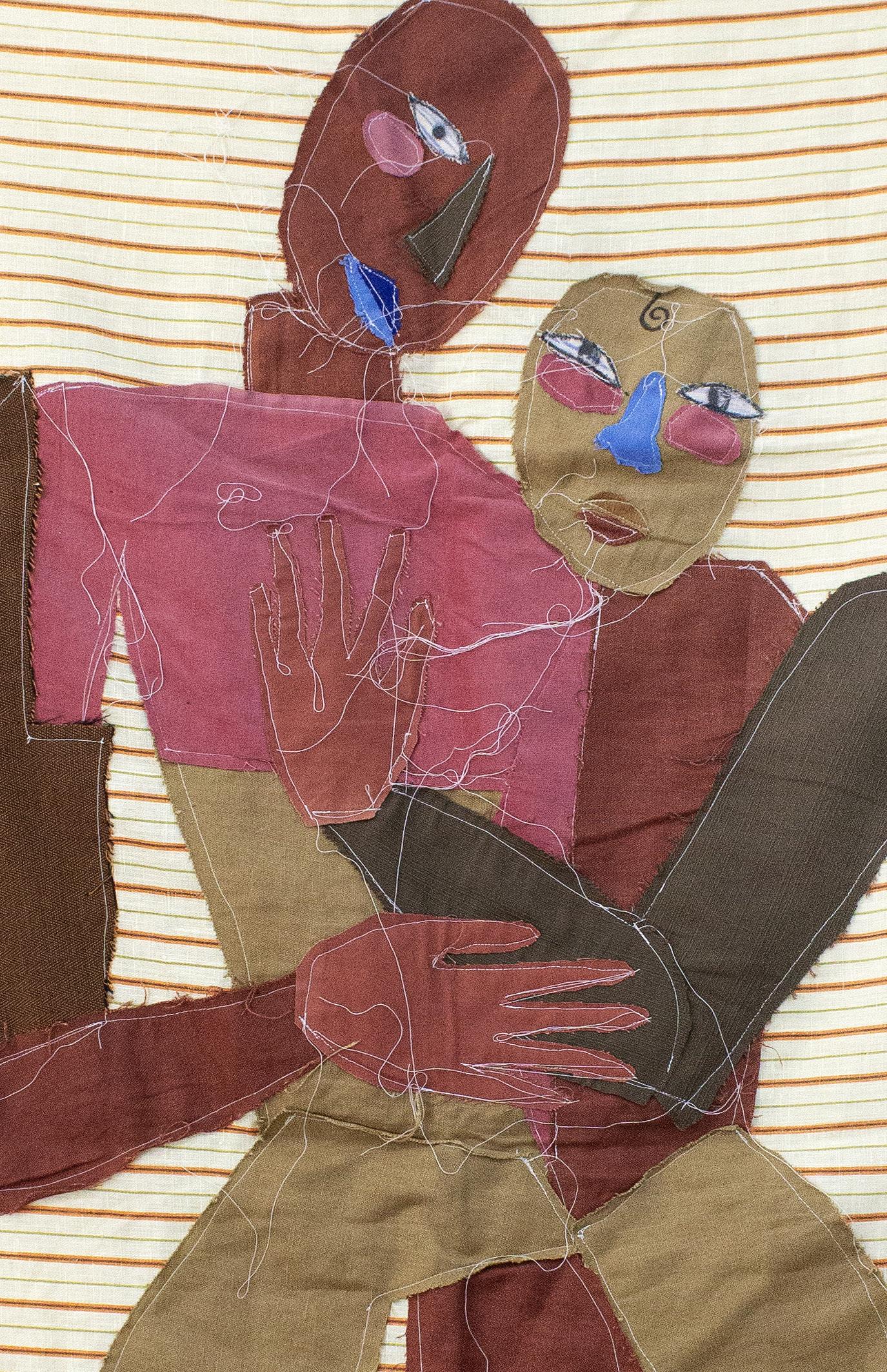
Aruni Dharmakirthi
Cheeky Gazer, 2022 Sarong, Mixed Textiles, Digitally Printed Fabric, Sharpie 140cm x 130cm

Aruni Dharmakirthi
Sweet Demon, 2022 Mixed Textile and Acrylic Paint 168cm x 130cm
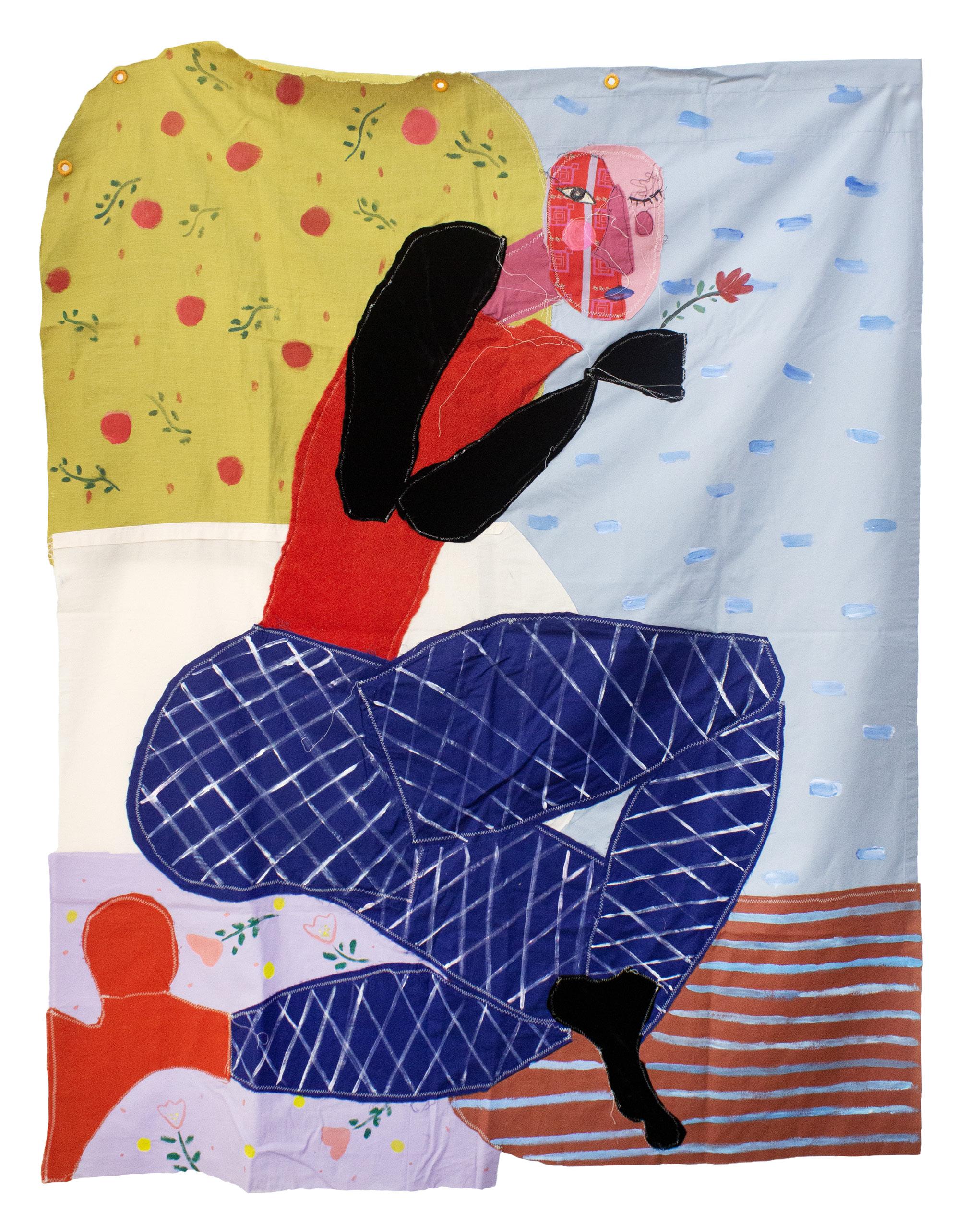
Aruni Dharmakirthi
Entwined Dancers, 2022 Mixed Textile 146cm x 99cm
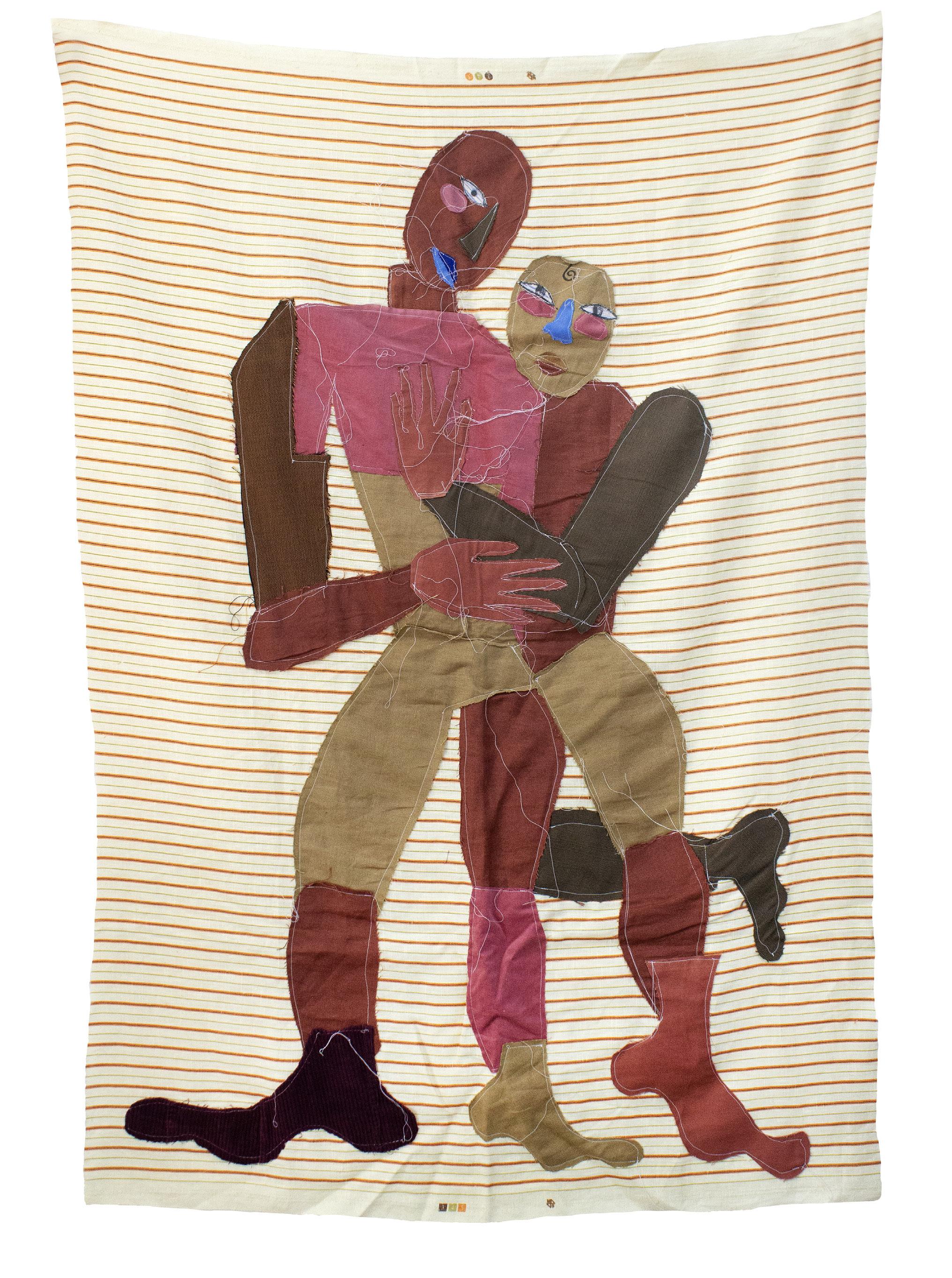
Aruni Dharmakirthi (b. 1990) is a Sri Lankan-born artist, educator, and meditation teacher based in Brooklyn, NY. Dharmakirthi received an MFA in Visual Studies from the Pacific Northwest College of Art in 2017. Their work explores memory, alchemy, and personal mythology through quilted tapestries and soft sculpture. They have participated as an artist in residence at the Bric Workspace Residency (NY), Centrum Emerging Artist In Residence (WA), and Caldera PNCA MFA Residency (OR). They also received an Equity Award from the American Craft Council to attend the Present: vTense 2019 conference in Philadelphia.

Nostalgia by Lojithan Ram transpires from an attempt to grasp the impermanence of abodes as one shifts stations. It becomes an essay on the desire to find a permanent station in a fast-moving world where life slips away like quicksand. Abandoned buildings that once housed familiar warmth and human connection become the artist’s muse as he projects memories belonging to different landscapes onto their empty walls. In his experiments with cyanotype printing, drawings of shrubs and plants superimposed onto photographs of buildings become indiscernible collages of personal histories and the city. He transforms disposable paper bags into sculptures, salvaging memories of his father and his childhood in the process. He traces upon them the architectural spaces he has inhabited and stores dried plants and paper flowers which are reminiscent of fond childhood memories, turning them into totems that help him carry forward the past.
Lojithan attempts to decelerate the pace of changes in his environment by reverting to memories and familiar places. He re-examines mythological narratives from Tamil literature—the Ramayanan, the Geetha Saram, and Vaikunda Ammanai as he seeks comfort in the stories of exile and of being away from loved ones. He copies the texts onto the surfaces of his sculptures and drawings, identifying parallels across time and place. Every one of his works is an attempt to relive the past—as he tries to find the ideal vocabulary to express his need for consistency and familiarity.
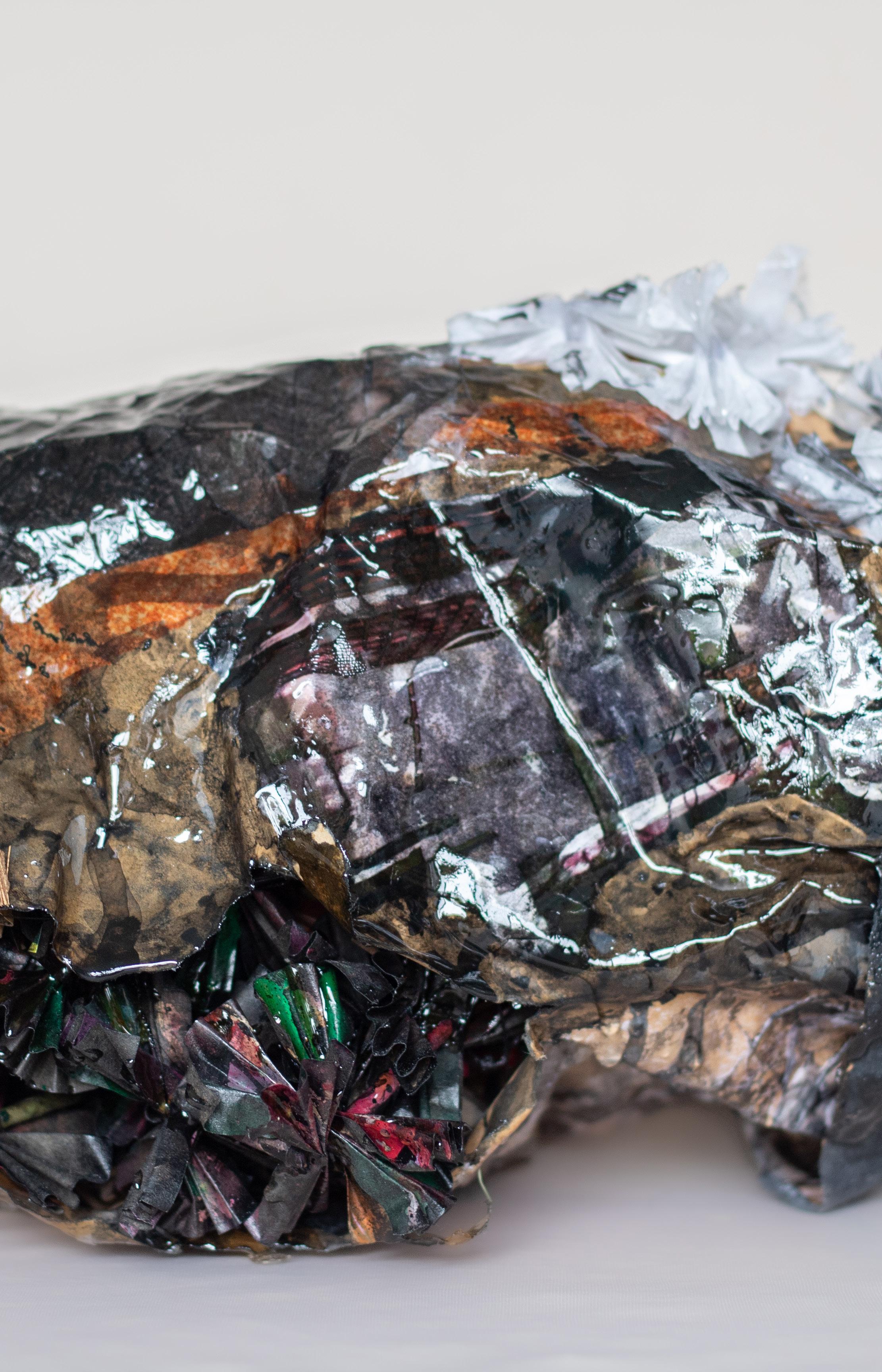
Lojithan Ram
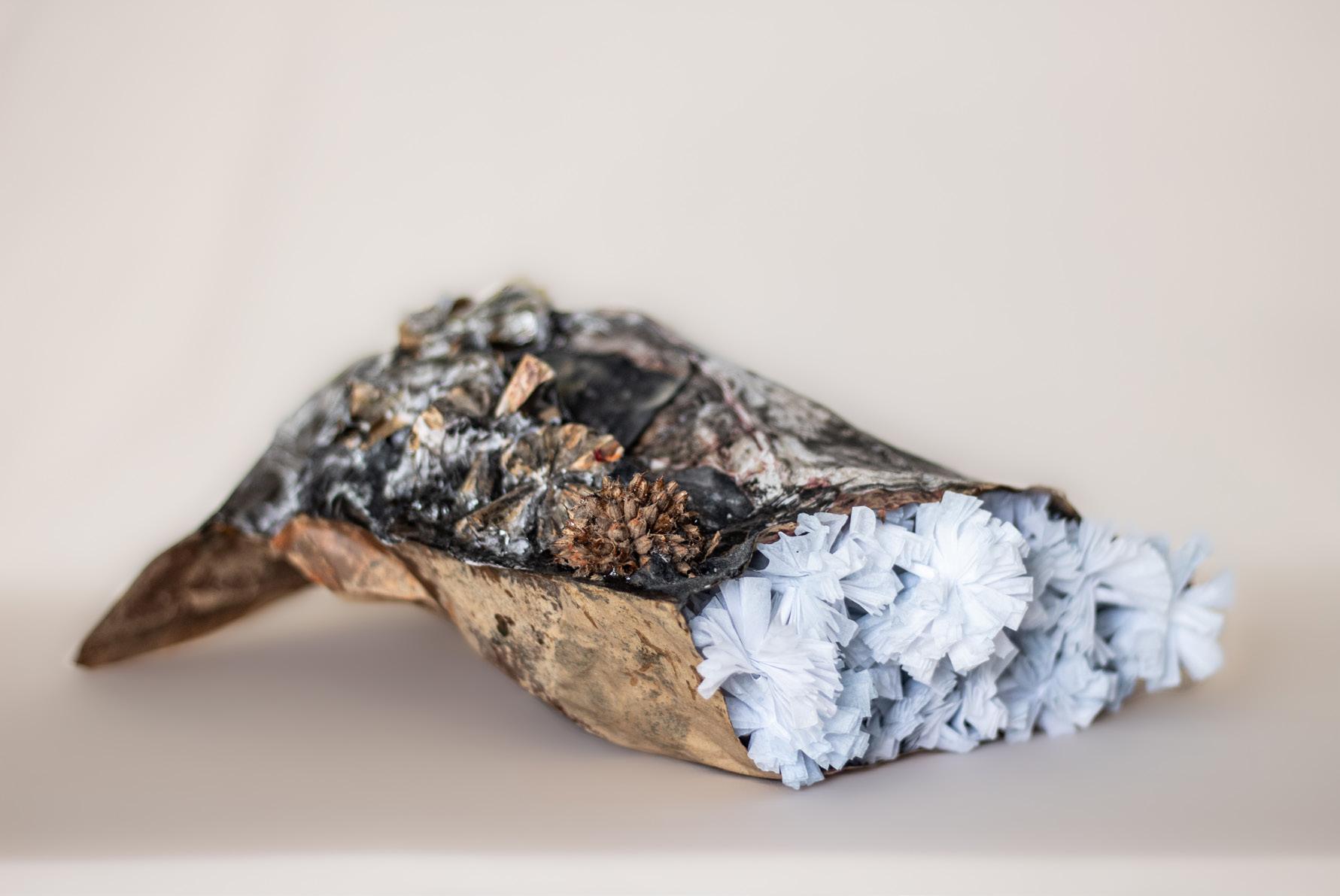
Yāttirai - i & ii, 2022 Mixed media on Brown paper bag 36cm x 27cm (each)

Lojithan Ram
Yāttirai - iii, 2022
Mixed media on Brown paper bag 36cm x 27cm
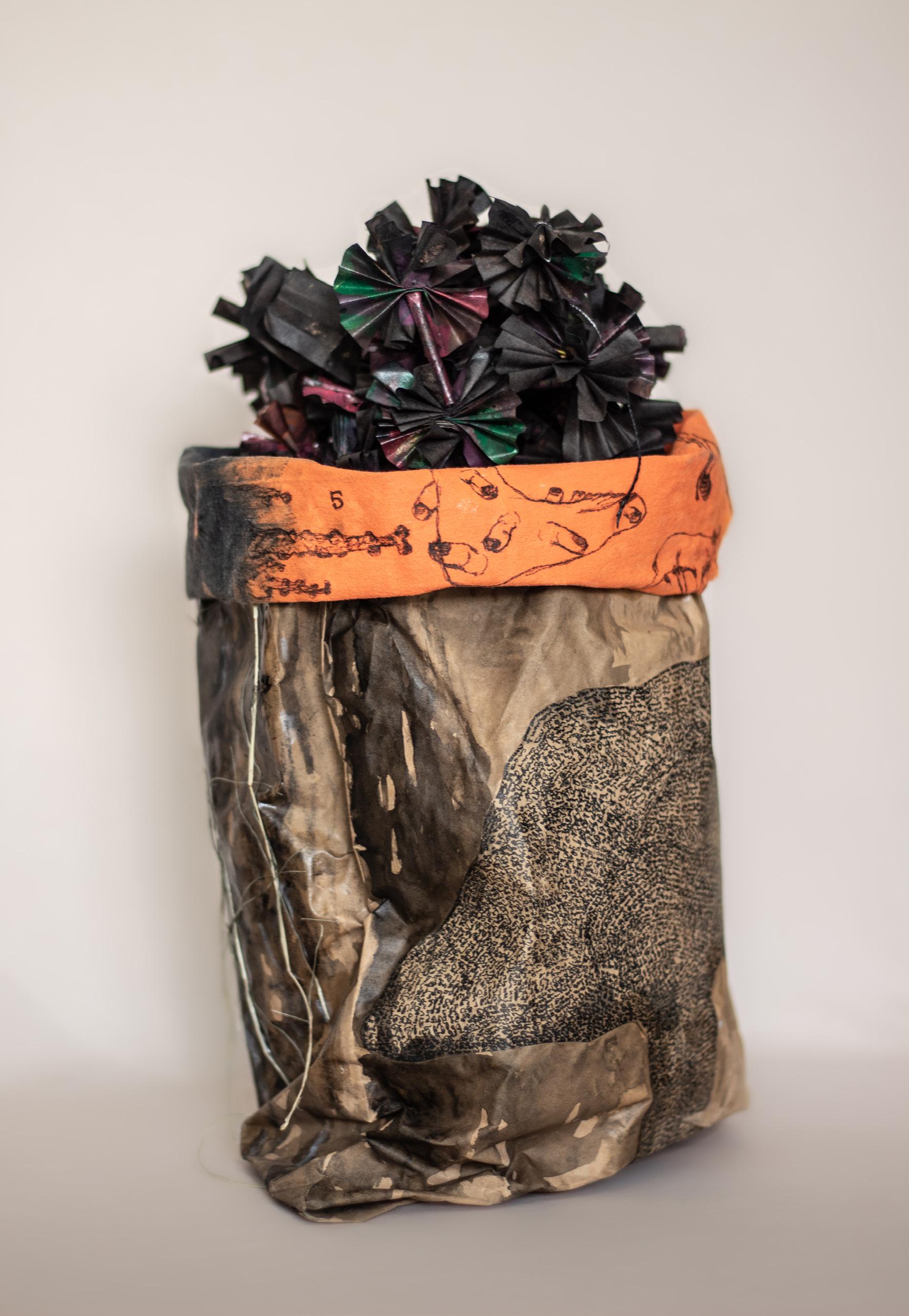
Lojithan Ram
(Top) Yāttirai - iv, 2022
Mixed media on Brown paper bag 36cm x 27cm
Lojithan Ram (Bottom) Yāttirai - v, 2022
Mixed media on Brown paper bag 36cm x 27cm


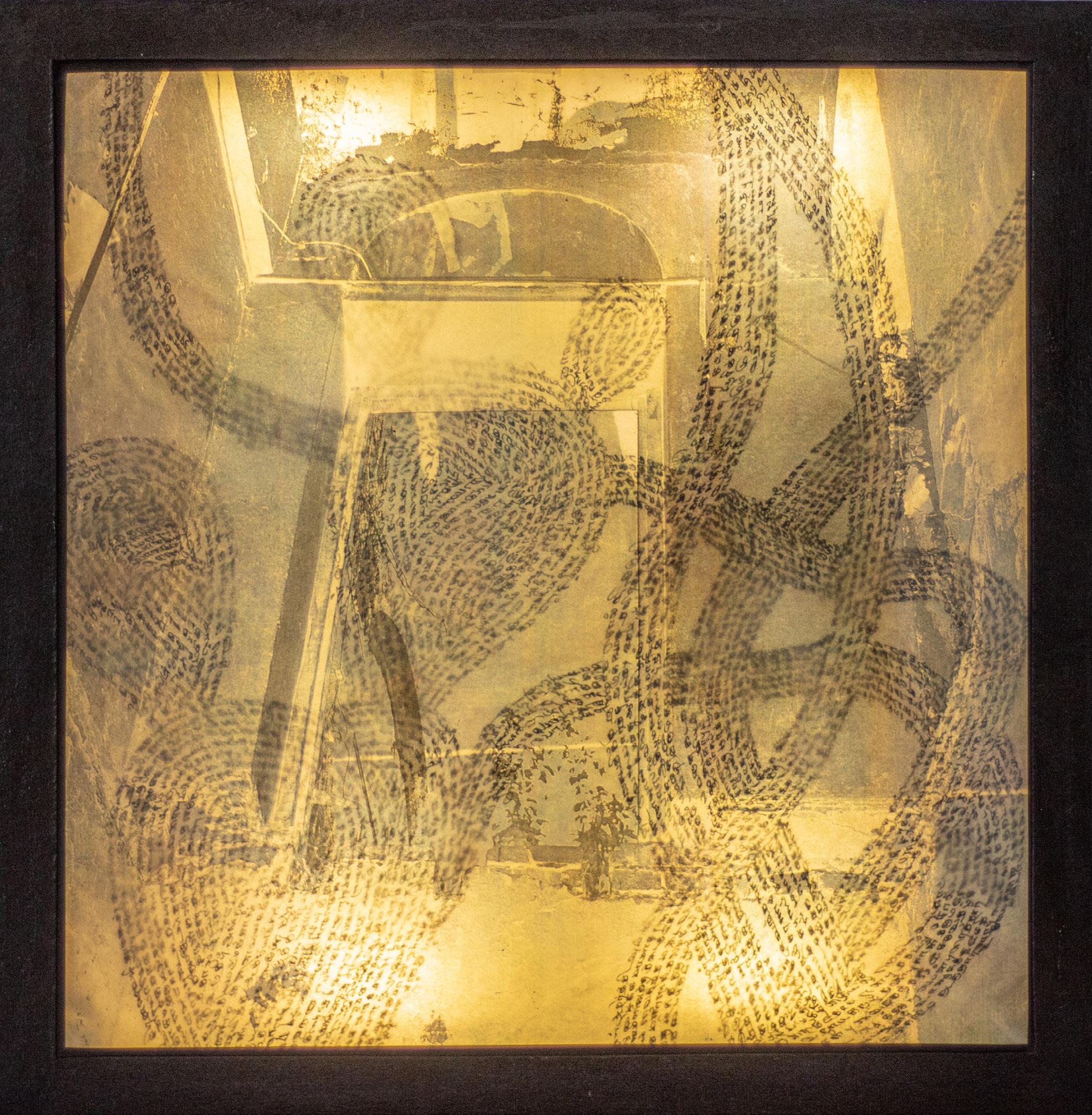
Pāl Veedu, 2022
Mixed media 12cm x12cm
Lojithan Ram
(Top) Pāḻ veedu - ii, 2022 Cyanotype on Board 21cm x 29cm
Lojithan Ram (Bottom) Pāḻ veedu - v, 2022 Cyanotype on board 29cm x 42 cm
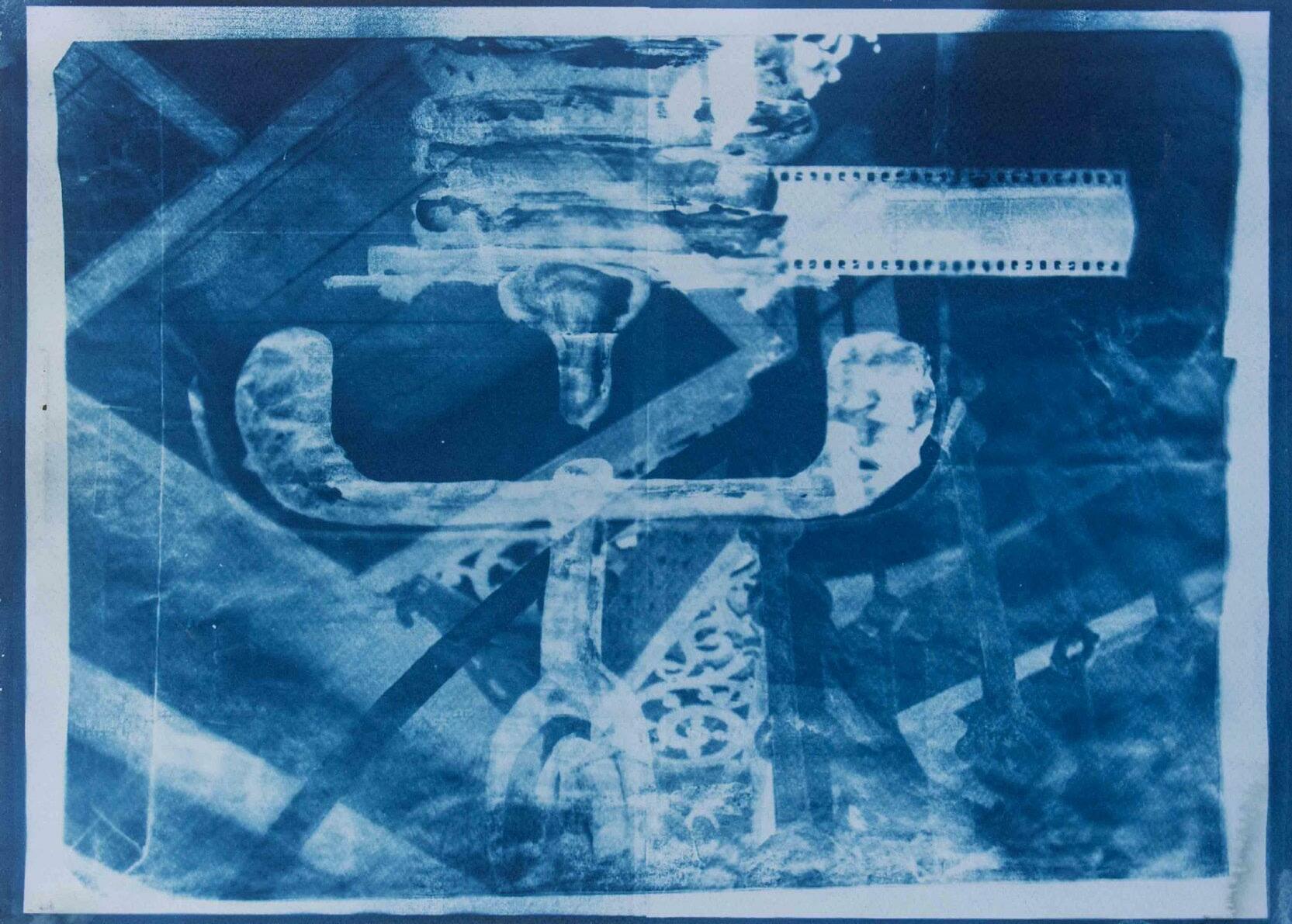
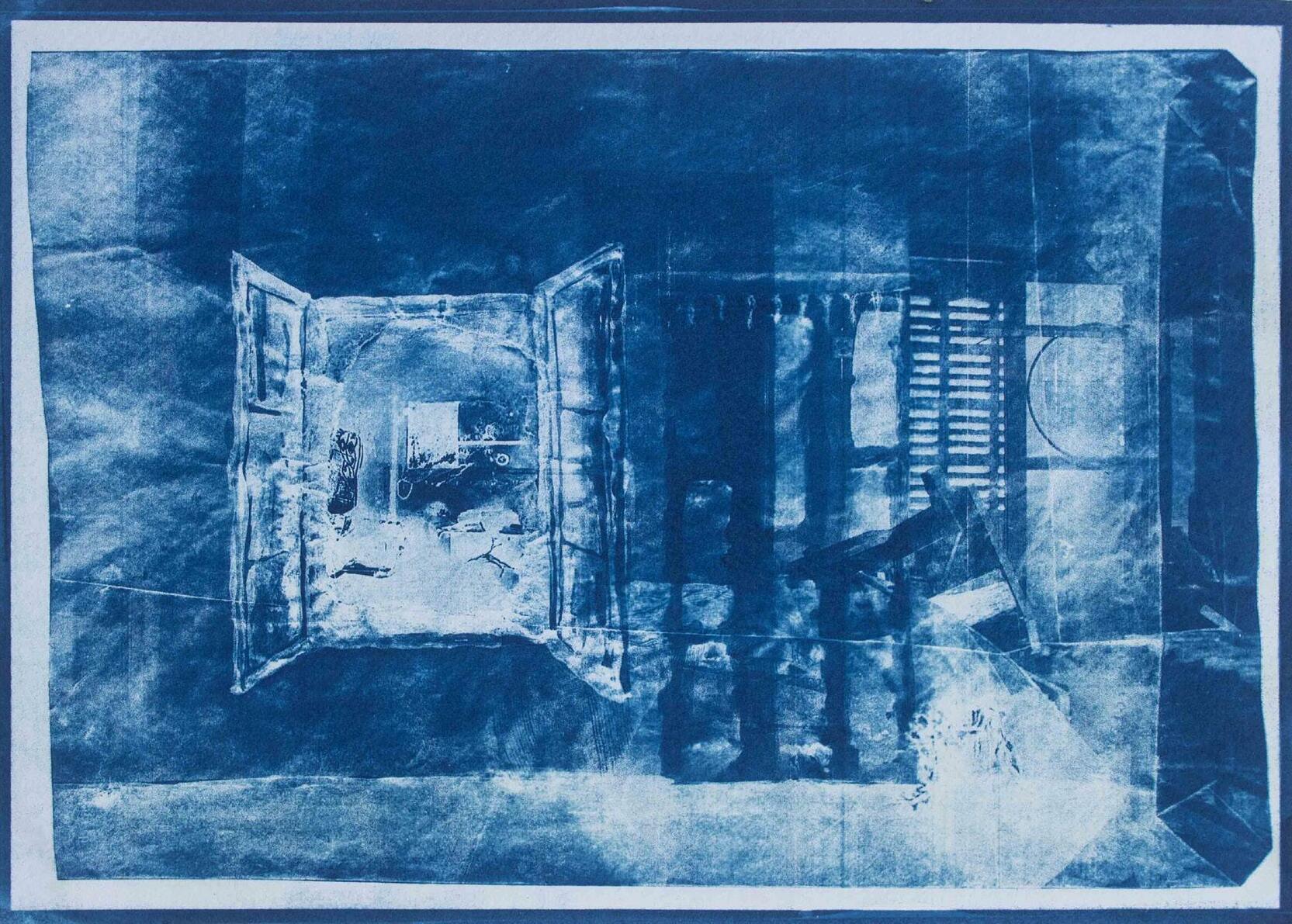
Pāḻ veedu - i, 2022 Cyanotype on board 29cm x 21cm

Lojithan Ram
Pāḻ veedu - iv, 2022 Cyanotype on board 29cm x 42cm

Pāḻ veedu - iii, 2022 Cyanotype on board 29cm x 42cm
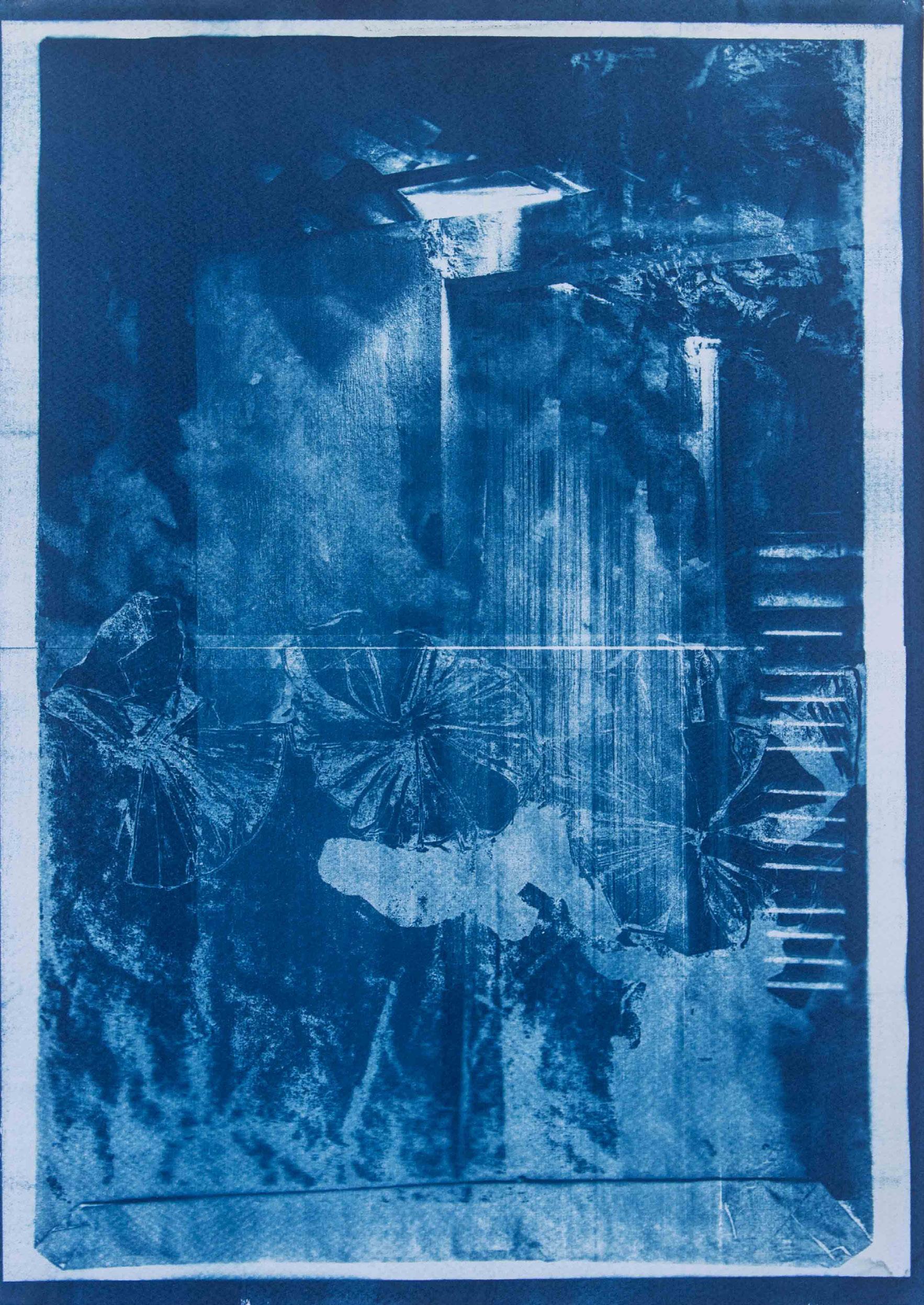
Pāḻ veedu - iii, 2022 Cyanotype on board 21cm x 29cm
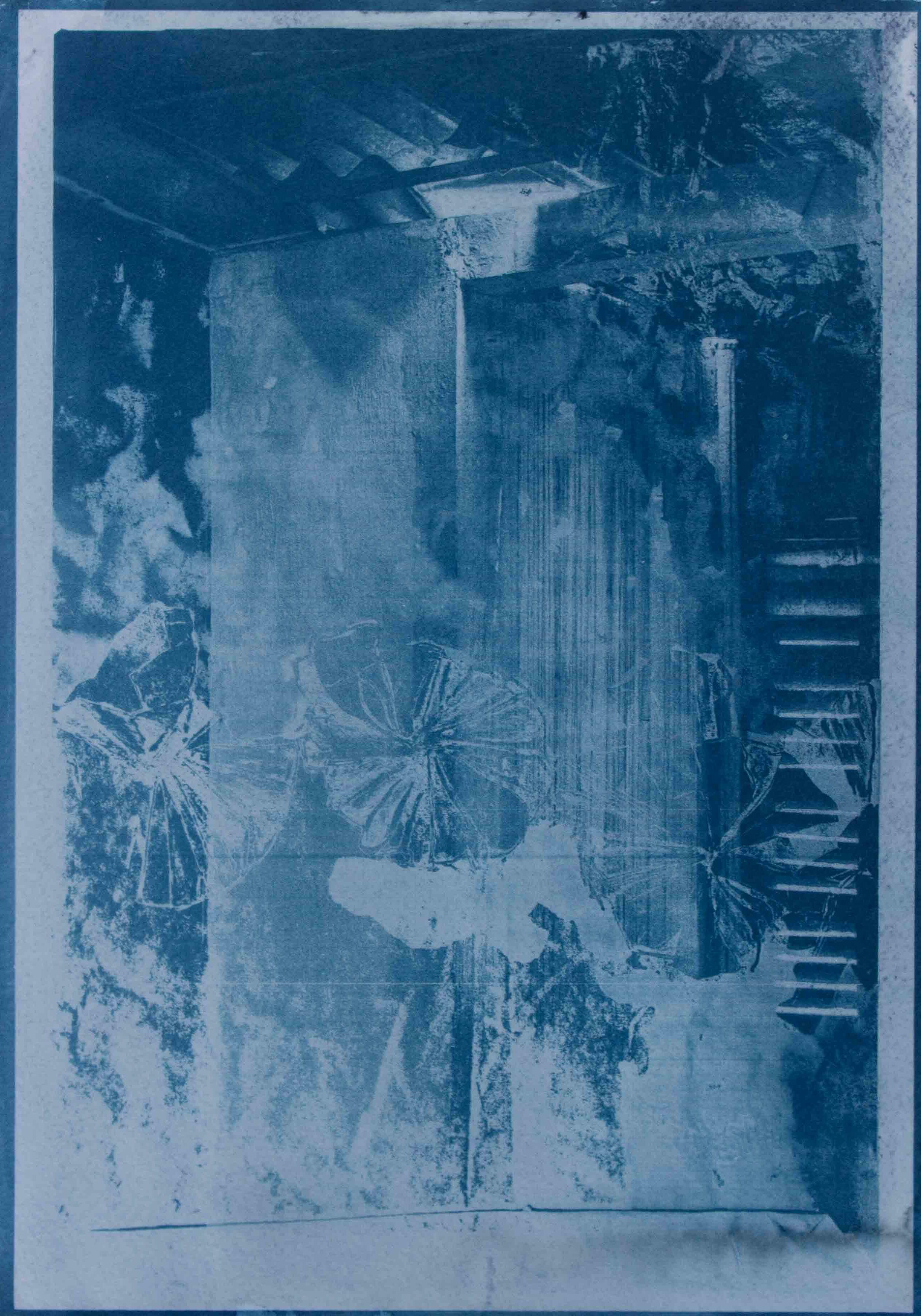
Lojithan Ram
Pāḻ veedu -vi, 2022 Cyanotype on board 21cm x 29cm

Pāḻ veedu -vii, 2022 Cyanotype on board 15cm x 21cm
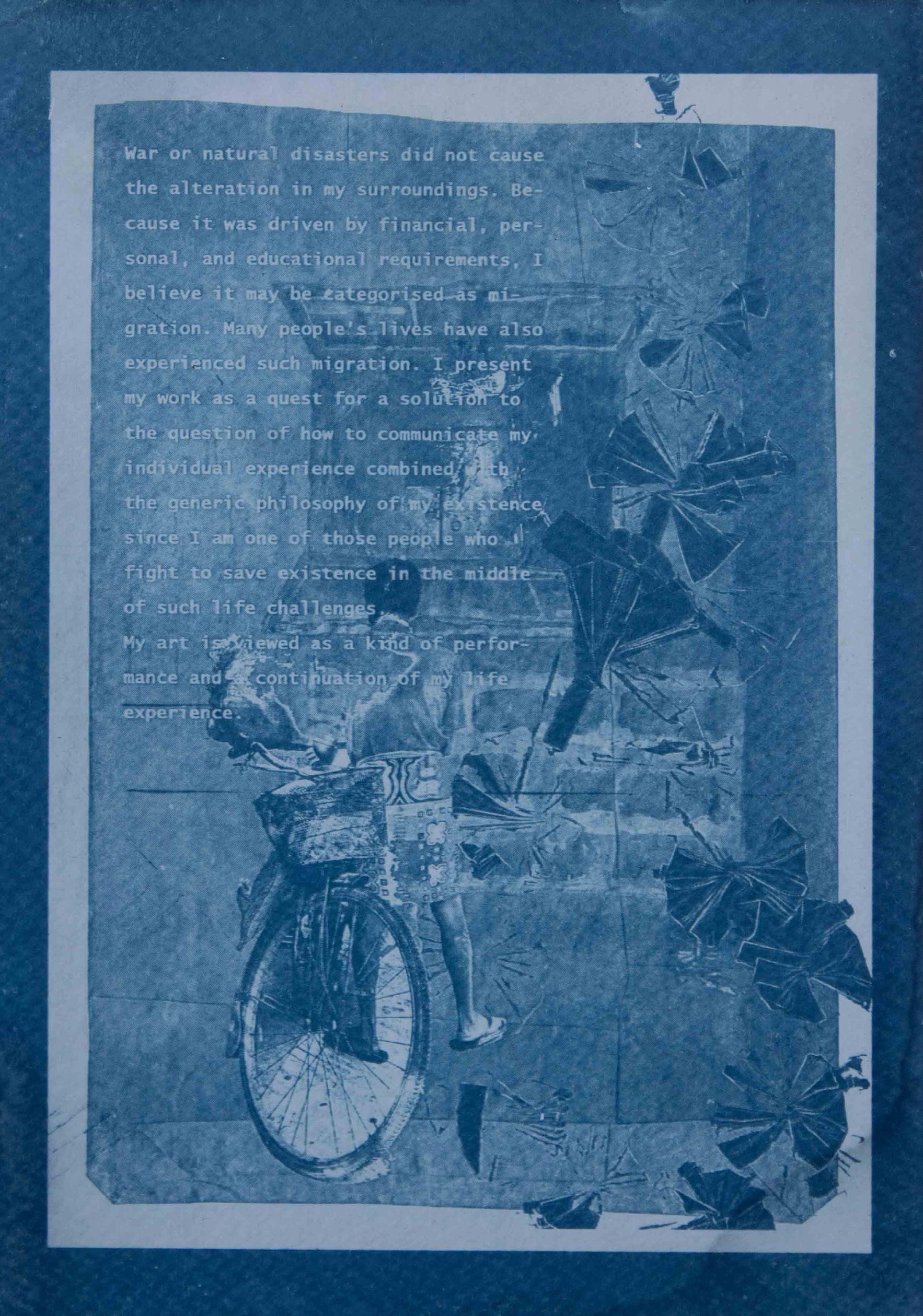
Parilojithan Ramanathan (b. 1993) is a multidisciplinary artist from Batticaloa, Sri Lanka whose practice primarily explores lens-based mediums. He received a BFA from the Ramanathan Academy of Fine Arts, University of Jaffna in 2018. His practice deals with nostalgia and memory. He is the co-founder of We Are From Here, a collective project which highlights a deeply interconnected community in Slave Island whose home-base is increasingly threatened by gentrification for state and corporate interests. His work has been exhibited at group shows such as the Chennai Photo Biennale, 5th Kochi Muziris Biennale & Colomboscope.
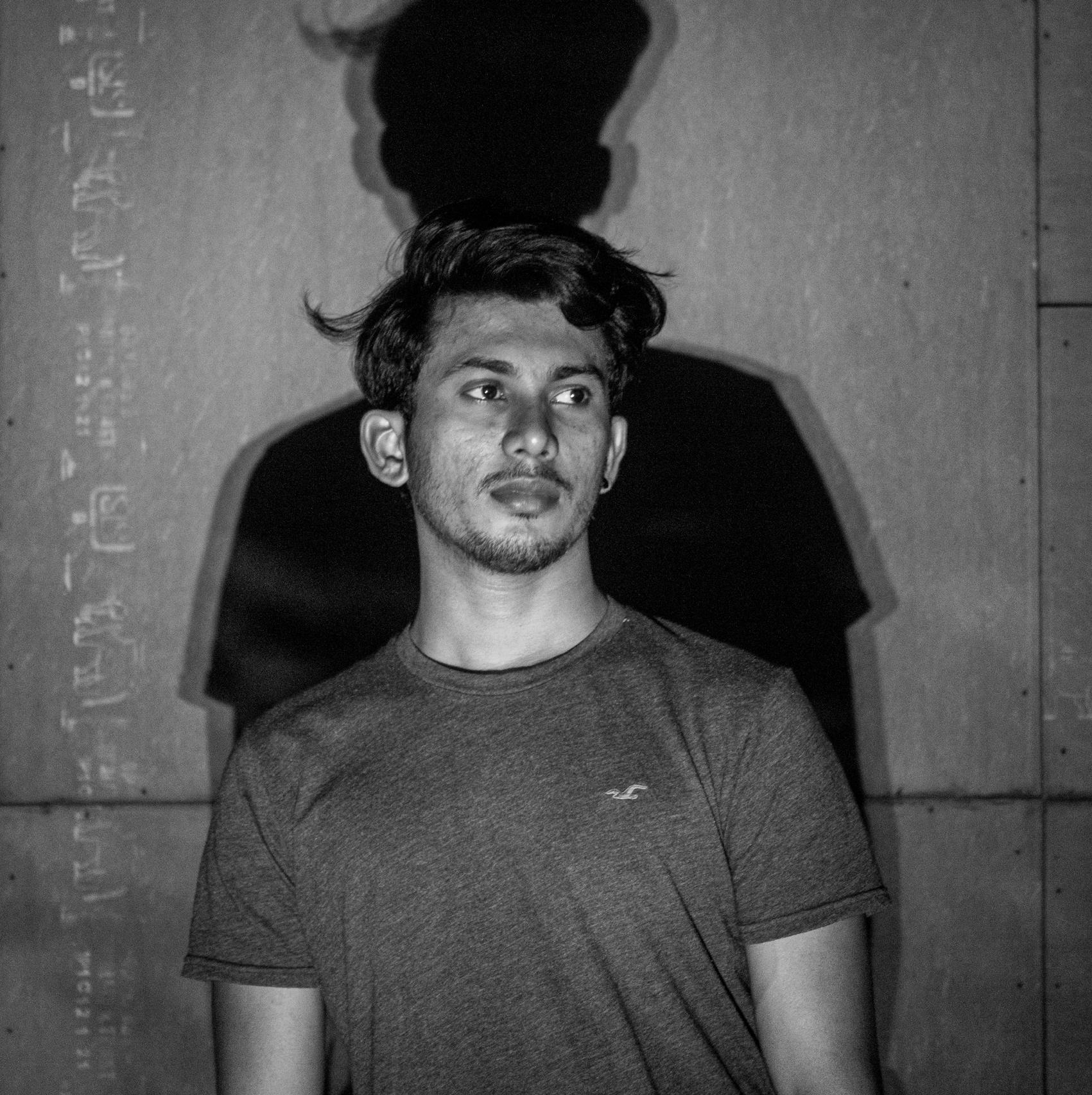
Randika De Silva’s Creatures of Thought begin as scribbles, sketches, and incoherent phrases. Using clay, fabric and needlework, her drawings gradually metamorphose into polyps, barnacles, hairs, limbs and tentacles which she assembles into soft sculptures of other-worldly yet organic entities. A sea of imagination becomes tangible in Randika’s sculptures. Like unformed thoughts that lie dormant until coaxed outside of their comfort, her scribbles take time to manifest.
Thoughts can remain lodged in the deep recesses of the mind as we unconsciously, or sometimes deliberately, suppress them to avoid confronting them. Occasionally they rush past our conscious control conjuring up dreams and the lives we desire. It is these ‘characteristics’ of thought that Randika examines in her work. She draws on the language of soft sculpture that was pioneered by women artists like Yayoi Kusama, Eva Hesse, and Sarah Lucas, to interrogate the plastic quality of thoughts and in the process give us a glimpse into her own quirky imagination.
The malleability of the materials the artist works with allows her ideas and work to transform multiple times before they become corporeal forms that can occupy physical spaces. At once quirky, unsettling and fantastical, they begin to exist among us—watching us with quizzical expressions on their faceless forms. The alluring quality of her creatures is that it offers the viewer permission to interact, interpret and even re-assemble them according to their own deep-rooted thought patterns. When we readjust the sculptures as they appeal to us, we are inadvertently toying with an idea and a thought, rearranging them as they make sense to us.

Randika De Silva Epiphanies, 2022 Cotton Thread and Stuffed Fabric 120cm x 21cm
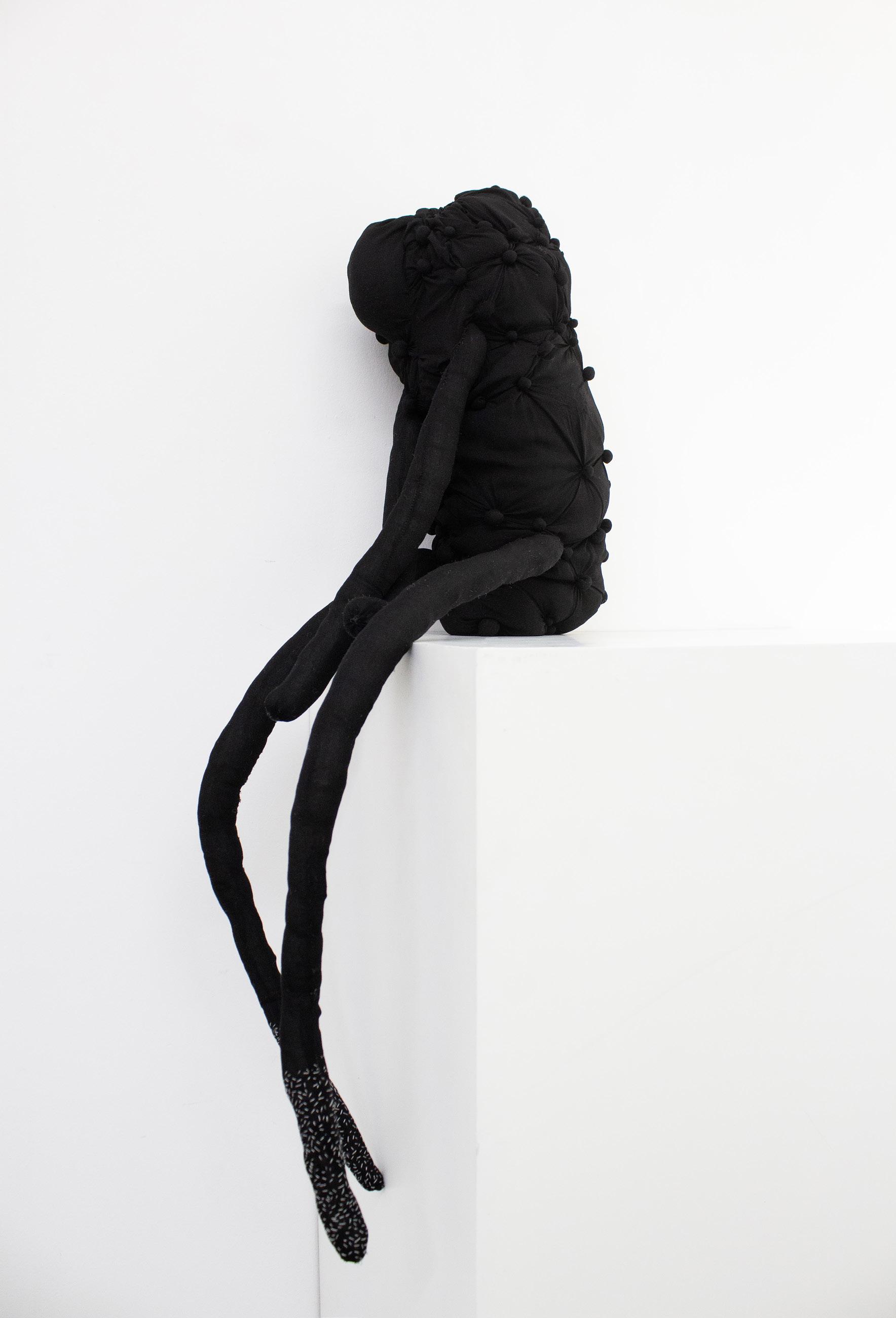
Randika De Silva
Inception, 2022
Polymer Clay, Cotton Thread and Stuffed Fabric Variable
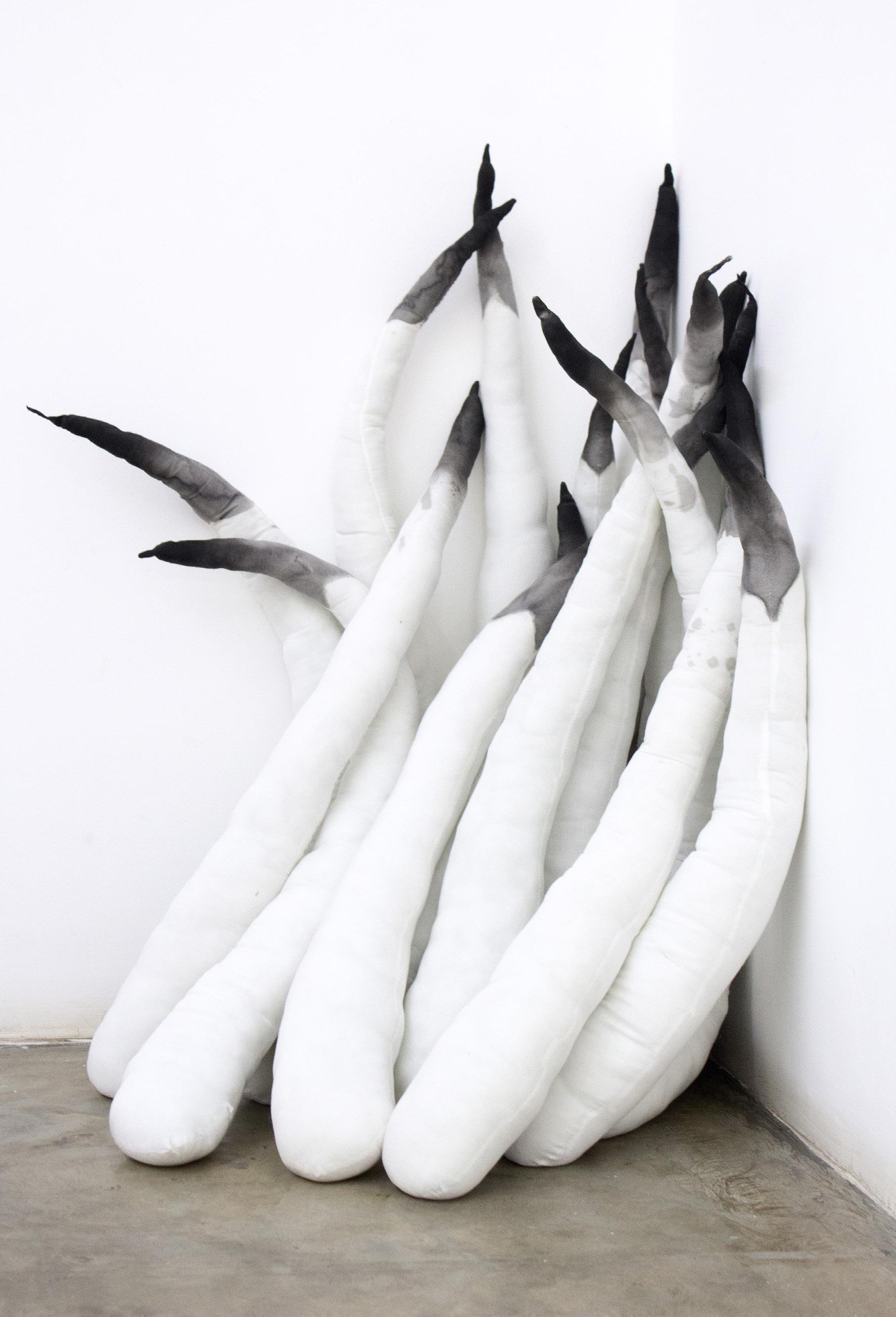
Randika De Silva
Muddle, 2022
Polymer Clay, Cotton Thread and Stuffed Fabric 141cm x 40cm
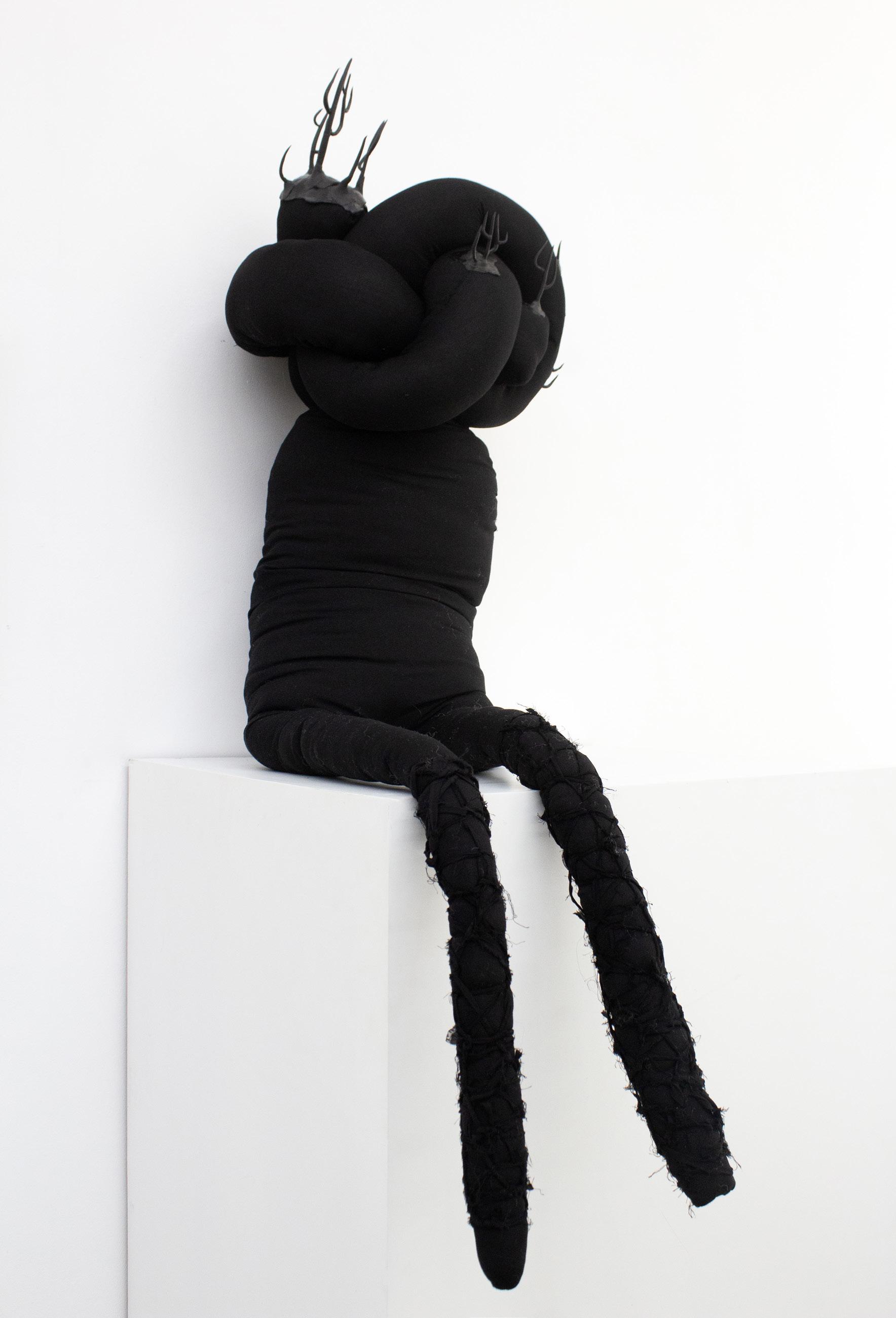
Randika De Silva
Transmute, 2022 Acrylic Paint, Polymer Clay and Stuffed Fabric 138cm x 32cm

Randika De Silva
Untitled, 2022 Acrylic Paint, Cotton Thread and Stuffed Fabric 134cm x 37cm
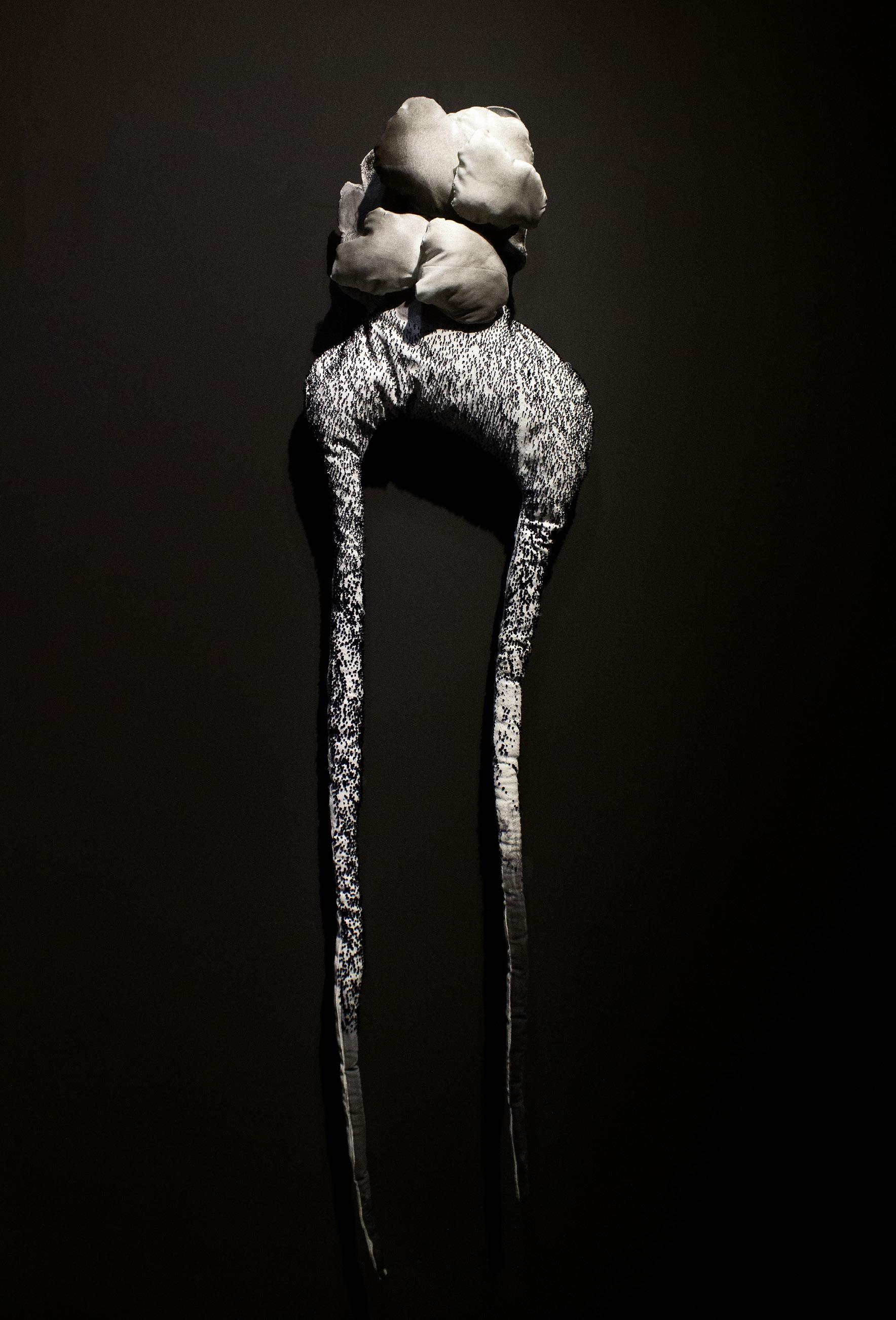
Duality, 2022
Acrylic Paint, Cotton Thread and Stuffed Fabric
160cm x 44cm x 23cm
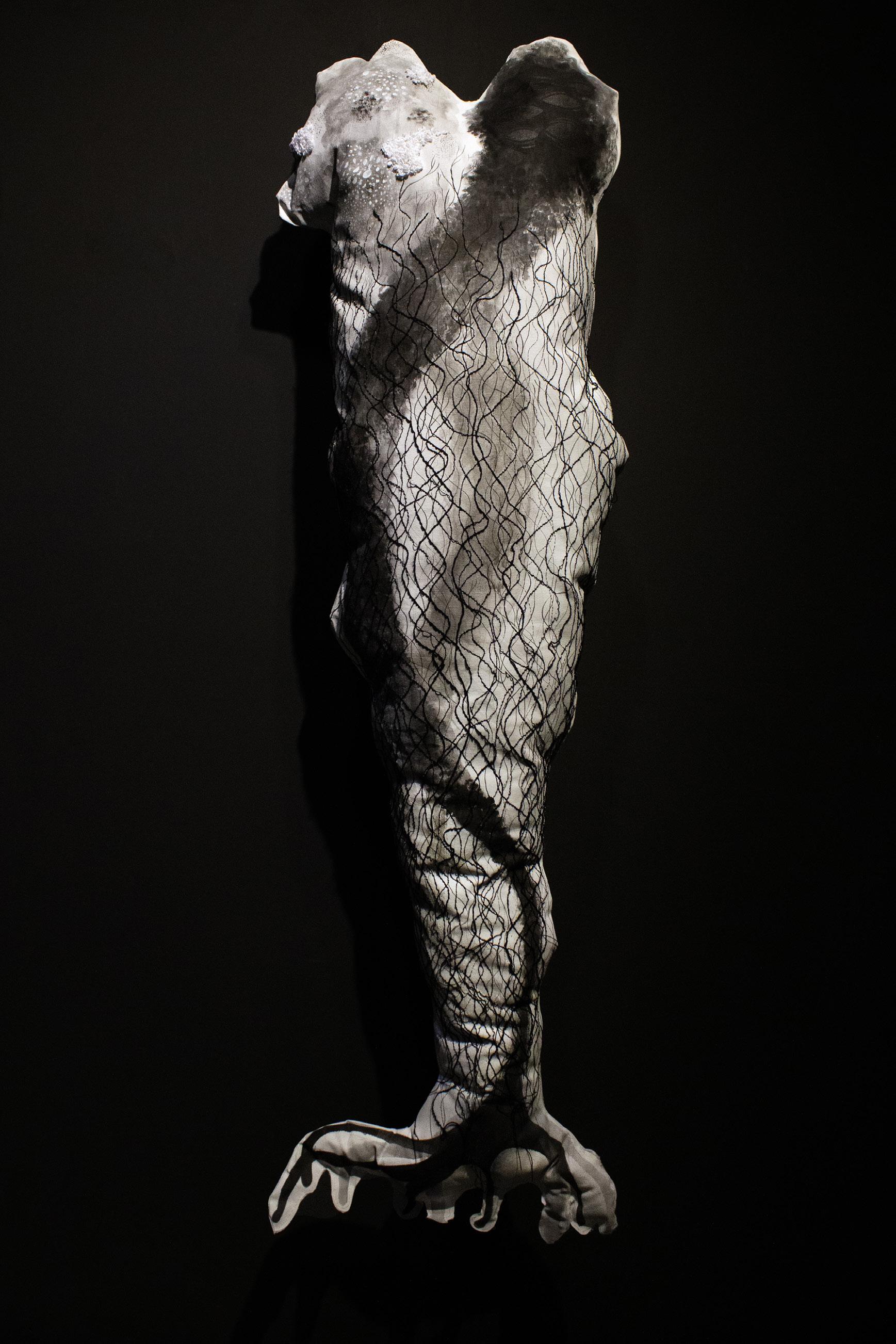 Randika De Silva
Randika De Silva
Polymer Clay, Cotton Thread and Stuffed Fabric 180cm x 100cm
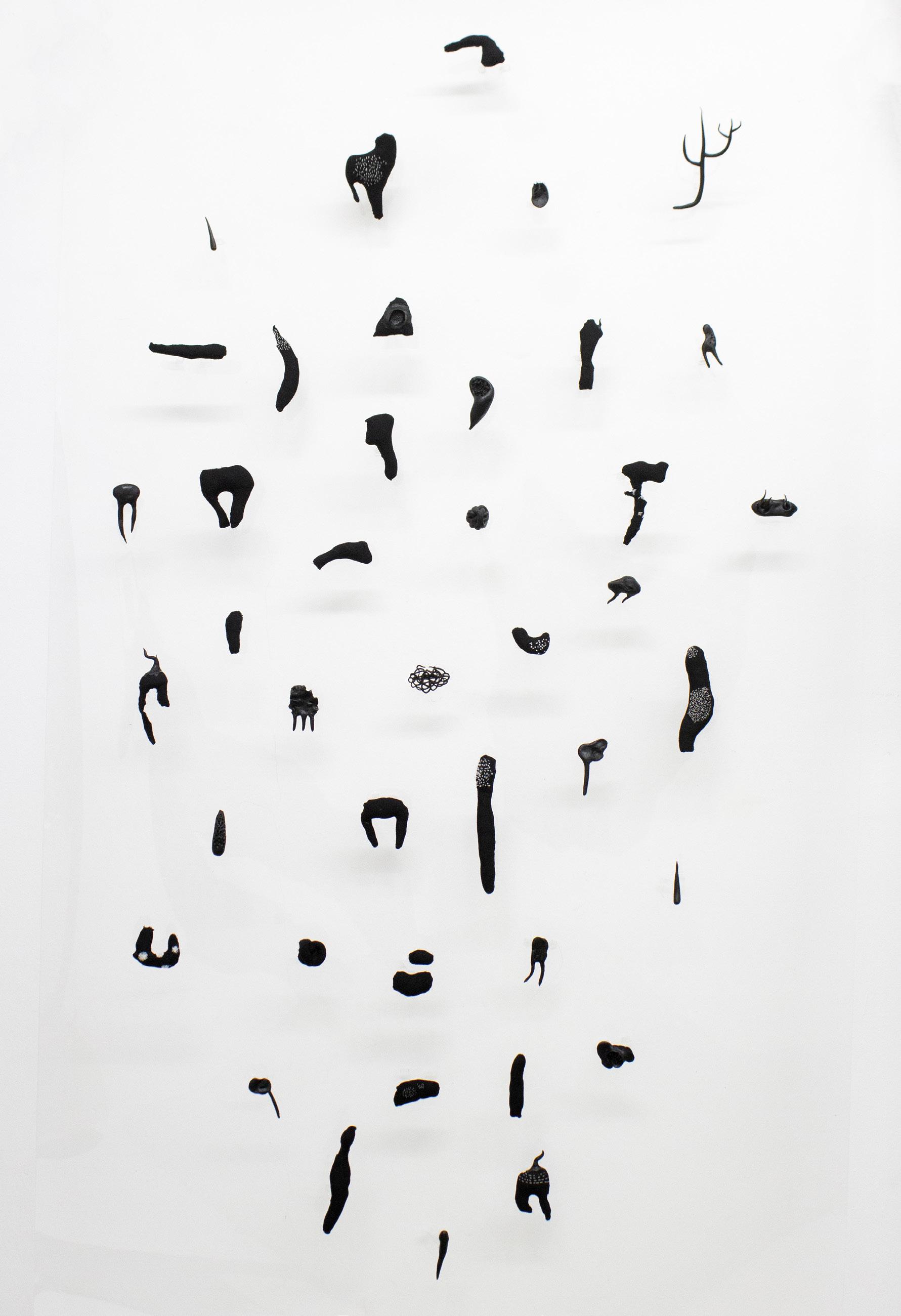
Randika De Silva (b.1994) is a visual artist and designer based in Sri Lanka. She received a Bachelor in Design (Hons.) from the University of Moratuwa, Sri Lanka in 2014. Randika takes an interdisciplinary approach to design in her exploration of human consciousness and experiences through drawing, textiles and soft sculpture.
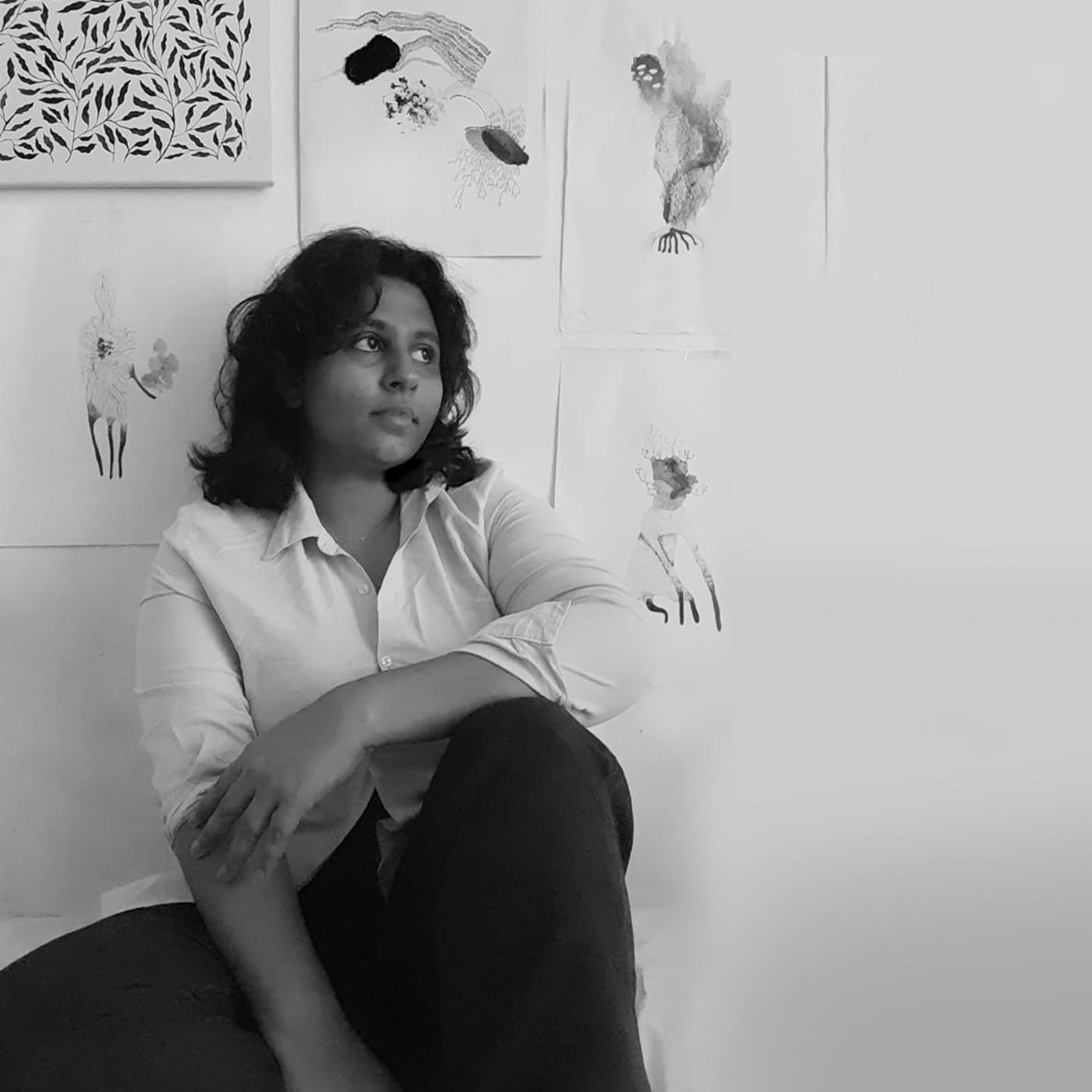
We would like to extend our heartfelt gratitude towards the artists Abdul Halik Aziz, Chandraguptha Thenuwara, Charith Wijesundara, Chudamani Clowes, Fabienne Francotte, Firi Rahman, Hashan Cooray, Hema Shironi, J C Rathnayake, Kanesh Thabendran, Kingsley Gunatilake, Muvindu Binoy, Namal Kumara, Nuwan Nalaka, Priyantha Udagedara, Ruwan Prasanna, Sanath Jayalath, Saskia Pintelon, and Yuwantha Yasas for donating their work towards the limited edition prints, to help raise the funds for the Artist for Artist Production Fund.
We are grateful to the judges Ms. Sonal Singh (Managing Director, Christie’s India) Dr. Sanjana Hattotuwa (Founder, Groundviews) and Prof. Jagath Weerasinghe (Artist, and Archaeologist), and the Directors of the Udayshanth Fernando Foundation for contributing their valuable time in reviewing the submissions we received and for selecting the final list of awardees.